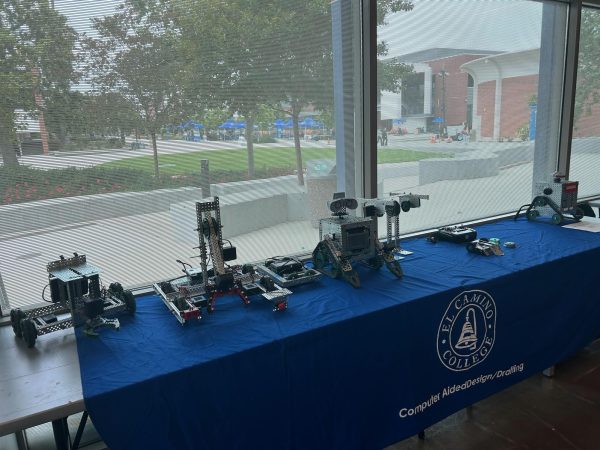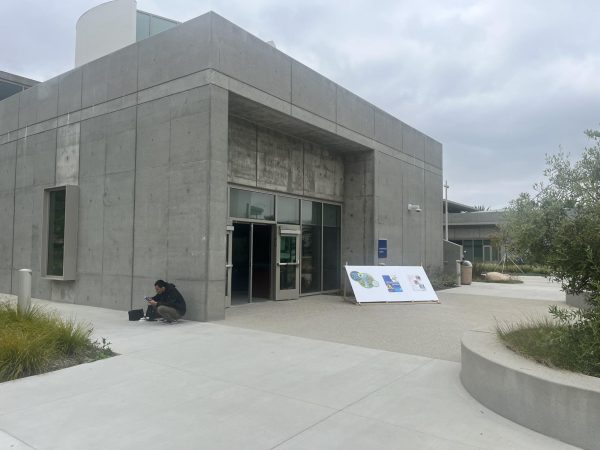‘Spider-Man: Across the Spider-Verse’ sets the bar for animation and superhero films
Spider-Man (Shameik Moore) and Spider-Woman (Hailee Steinfeld) in “Spider-Man: Across the Spider-Verse.” Photo courtesy of Sony Pictures.
“Spider-Man: Across the Spider-Verse” is a visual and narrative spectacle that sets a new high bar for animation and the superhero genre.
Set one year after the conclusion of the 2018 Oscar award-winning film “Spider-Man: Into the Spider-Verse,” “Across the Spider-Verse” is an animated love story that follows main characters Miles Morales as Spider-Man and Gwen Stacy as Spider-Woman, voiced by Shameik Moore and Hailee Steinfeld.
After struggling to balance their duties of being superheroes with their personal lives in separate universes, Gwen and Miles are reunited and blast off on a multi-universe adventure to catch a dimension-hopping villain called The Spot (Jason Schwartzman).
Joining them is Gwen’s new team, The Spider Society.
Led by Miguel O’Hara as Spider-Man 2099 (Oscar Isaac), the Spider Society is a group of super-powered Spider-People from across universes who seek to protect the multiverse.
When Miles and Miguel disagree on ways of dealing with an imminent threat from The Spot, a civil war breaks out between Miles and the Spider Society.
Although the action-adventure aspects of the film help to drive the plot forward, “Across the Spider-Verse” is never afraid to take breaks to focus on the characters through an emotionally resonant story with Gwen, Miles and their growing disconnect between their families being the core of the film.

Gwen and Miles’ story is backed up by an incredible supporting cast of characters, including a returning Peter B. Parker (Jake Johnson) alongside newcomers Spider-Punk (Daniel Kaluuya) and the Jessica Drew version of Spider-Woman (Issa Rae).
While the first movie explored the theme that anyone is capable of donning the Spider-Man mask, the sequel focuses on the power and responsibility that comes when the mask is on and the effect it has on Gwen, Miles and their loved ones.
“Spider-Man: Across the Spider-Verse” plays with the hero’s central themes of sacrifice and responsibility better than any film before it.

Clocking in at two hours and 23 minutes, not only is “Across the Spider-Verse” a success narratively, but it also manages to improve upon the award-winning visuals seen in the first film.
Each universe that Miles, Gwen and The Spot visit contains its own unique animation style.
Six main art styles are represented in “Across the Spider-Verse,” including an upgraded version of the “Into the Spider-Verse” comic-book animation, abstract expressionism, paper art and more.
Characters from different animation styles pop in and out of universes as well, creating an even greater visual feast for fans of animation and art.
Second to its animation, the first film is often remembered for its curated licensed soundtrack, featuring hit songs “Sunflower,” by Post Malone and Swae Lee and “What’s Up Danger,” by Black Caviar and Blackway.
Hip-Hop producer Metro Boomin curated the entire licensed soundtrack for “Across the Spider-Verse,” featuring original songs that he produced.

The album includes a standout list of accompanying artists, including Lil’ Wayne, Nas, Future, A$AP Rocky, Swae Lee, Offset, and more.
While the new soundtrack does not feature any immediate hits, the sophomore effort from Metro Boomin manages to surpass the original “Into the Spider-Verse” soundtrack as a complete collection.
Early standout songs include “Am I Dreaming,” by Metro Boomin, A$AP Rocky and Roisee and “Calling,” by Metro Boomin, Swae Lee, NAV and featuring A Boogie wit da Hoodie.
In addition to a great licensed album, “Across the Spider-Verse” has an even stronger orchestral soundtrack produced by Daniel Pemberton, whose accompanying tracks help to accentuate every emotional beat and superheroic punch thrown in the movie.
The film not only establishes itself as one of the best Spider-Man films to date but it’s also one of the best animated and superhero films out there.
“Spider-Man: Across the Spider-Verse” is an outstanding cinematic achievement in both animation and the superhero genre. In addition to the breathtakingly beautiful animation style, this film will be remembered for its moving story that leaves audiences wanting more as soon as the credits roll.
“Spider-Man: Across the Spider-Verse” is now playing in theaters.
The third movie, “Spider-Man: Beyond the Spider-Verse,” is scheduled to release on March 29, 2024.
Editor’s Note: Added additional context for soundtrack information on June 4, 2023.














